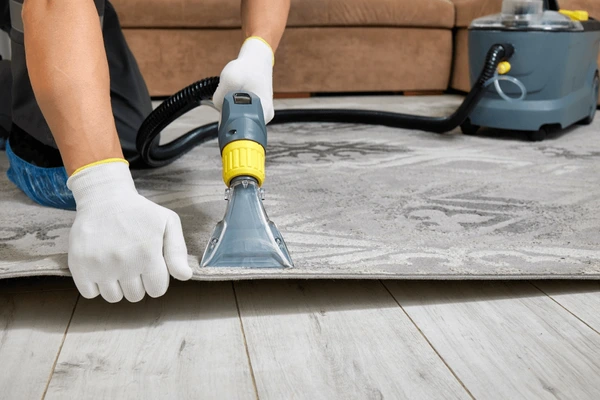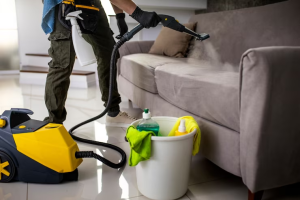The Best Tools and Products for Effective Tile Cleaning
Tiles are a popular choice for flooring, backsplashes, and walls due to their durability and aesthetic appeal. However, keeping them clean can be a challenge, especially in high-traffic areas or places prone to moisture. Using the right tools and products is essential to maintaining their appearance and longevity. Whether dealing with kitchen spills, bathroom grime, or outdoor stains, understanding the best methods for tile cleaning ensures a spotless and hygienic surface.
Choosing the Right Tile Cleaner

The first step to effective tile cleaning Wilder Idaho is selecting an appropriate cleaner. There are various types of tile, including ceramic, porcelain, natural stone, and glass, each requiring a different approach. For ceramic and porcelain tiles, a mild detergent mixed with warm water is often sufficient. These tiles are relatively non-porous, making them resistant to deep stains.
Natural stone tiles, such as marble or travertine, require pH-neutral cleaners to prevent damage. Acidic solutions, including vinegar or lemon-based products, can etch the surface and cause discoloration. For glass tiles, a non-abrasive cleaner helps maintain their shine without scratching the surface. Choosing the right cleaner based on the tile type ensures effective tile cleaning wilder, idaho without causing unnecessary wear.
Essential Tools for Tile Cleaning
Using the proper tools makes a significant difference in how effectively tiles are cleaned. A good-quality mop is essential for large tile surfaces. A microfiber mop works well as it traps dirt and dust without spreading debris. For deeper cleaning, a steam mop can help remove grime without the need for harsh chemicals.
Scrubbing brushes are useful for tackling stubborn stains, especially in grout lines. A soft-bristled brush is ideal for delicate tiles, while a stiff-bristled one works well for heavily soiled areas. Toothbrushes or small detailing brushes can help clean grout lines thoroughly. A high-quality sponge or cloth is also essential for wiping down surfaces without leaving streaks.
A vacuum or a broom with soft bristles is helpful for removing dry dirt and debris before using liquid cleaners. Sweeping regularly prevents dirt from settling into grout lines, reducing the need for intense scrubbing. Investing in the right tools simplifies tile maintenance and enhances cleaning efficiency.
Tackling Stubborn Stains and Grime
Even with regular cleaning, tiles can develop stains over time. Kitchen tiles may accumulate grease, while bathroom tiles are prone to soap scum and mold. For grease stains, a degreasing agent or a mix of warm water and dish soap helps break down the buildup. Applying a paste of baking soda and water to stained areas and scrubbing gently can also lift stubborn marks.
Mold and mildew in bathrooms require a targeted approach. A mixture of hydrogen peroxide and water can effectively remove mold without causing damage. For persistent stains, applying the solution and letting it sit for a few minutes before scrubbing helps loosen the grime. Using a squeegee or wiping down bathroom tiles after showers prevents moisture buildup and minimizes mold growth.
Maintaining Grout Cleanliness
Grout is often the most challenging part of tile maintenance, as it tends to trap dirt and discolor over time. Keeping grout clean enhances the overall appearance of tiles. A mixture of baking soda and hydrogen peroxide creates a natural cleaning paste that can be applied to grout lines and scrubbed with a brush. For tougher stains, oxygen bleach can be an effective solution when used sparingly.
Sealing grout after cleaning helps maintain its condition by preventing future stains. Grout sealers create a protective barrier that repels dirt and moisture, making cleaning easier. Regular reapplication of grout sealer ensures long-lasting results and keeps grout looking fresh.
The Role of Steam Cleaning
Steam cleaning is a powerful method for tile maintenance, as it effectively removes dirt, stains, and bacteria without harsh chemicals. A steam cleaner uses high-temperature steam to break down grime, making it easier to wipe away. This method is especially beneficial for households with children or pets, as it eliminates germs without leaving behind chemical residues.
Steam cleaning is particularly effective for grout lines, where dirt accumulates over time. The heat penetrates deep into the grout, loosening embedded debris. For best results, using a steam cleaner with a brush attachment allows for targeted cleaning in hard-to-reach areas.

Preventative Measures for Long-Term Tile Care
Regular maintenance helps reduce the need for deep cleaning and extends the life of tiles. Wiping up spills immediately prevents stains from setting in. Using rugs or mats in high-traffic areas minimizes dirt accumulation and protects tile surfaces from excessive wear.
Drying bathroom tiles after use reduces moisture buildup, preventing mold growth. Installing proper ventilation, such as exhaust fans, further helps maintain dry conditions. Using furniture pads under heavy items prevents scratches on tile floors, preserving their appearance over time.
Choosing cleaning products that are compatible with tile surfaces avoids damage. Reading labels and following manufacturer recommendations ensures that the cleaning process enhances, rather than harms, the tiles. Establishing a consistent cleaning routine keeps tiles looking their best and prevents long-term buildup of dirt and grime.

 Sofas and loveseats may appear clean on the surface, but deep within the fabric, dust, allergens, and bacteria accumulate over time. Every time someone sits down, microscopic particles become airborne, affecting indoor air quality. Dust mites, pet dander, and pollen settle into the upholstery, creating an environment that can trigger allergies and respiratory issues. Even food crumbs and spills, which may seem harmless, can lead to mold growth and unpleasant odors if left unattended.
Sofas and loveseats may appear clean on the surface, but deep within the fabric, dust, allergens, and bacteria accumulate over time. Every time someone sits down, microscopic particles become airborne, affecting indoor air quality. Dust mites, pet dander, and pollen settle into the upholstery, creating an environment that can trigger allergies and respiratory issues. Even food crumbs and spills, which may seem harmless, can lead to mold growth and unpleasant odors if left unattended. Many people do not realize that sofas and loveseats can harbor bacteria and germs just like any other frequently touched surface. Hands, clothing, and pets transfer bacteria to furniture, creating a breeding ground for germs. If left uncleaned, these bacteria can spread throughout the home, increasing the risk of illness.
Many people do not realize that sofas and loveseats can harbor bacteria and germs just like any other frequently touched surface. Hands, clothing, and pets transfer bacteria to furniture, creating a breeding ground for germs. If left uncleaned, these bacteria can spread throughout the home, increasing the risk of illness.